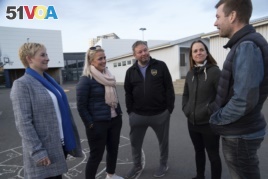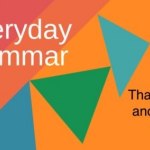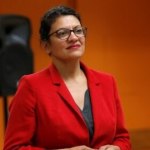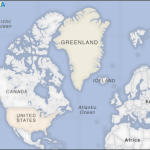Iceland is successfully treating a crisis in teenage drinking. The island nation has one of the lowest rates of teen substance abuse in Europe.
冰岛成功处理了青少年饮酒危机。这个岛国是欧洲青少年滥用药物率最低的国家之一。
How did Iceland do it?
冰岛是如何做到这点的呢?
The country combined local involvement and an increase in music and sports activities for students. The actions have helped shrink a teen culture of smoking and drinking.
这个国家把当地参与跟增加学生的音乐和体育活动结合了起来。这些措施有助于压缩青少年的烟酒文化。
One of these actions was the establishment of curfews for teenagers. Now children under 12 are not allowed to be outside after 8 p.m. without parents and those 13 to 16 not past 10 p.m. Over summer, when school is out, the curfew is two hours later.
其中一项措施是确立青少年宵禁制度。现在,12岁以下儿童在晚上8点之后不得外出。无父母陪伴以及13岁到16岁青少年外出时间不能超过晚上10点。夏天学校放假之后,宵禁时间延后两个小时。
Parents are involved in enforcing the curfew: Every weekend across Iceland's capital, Reykjavik, they take a two-hour early nighttime walk around their neighborhood. These "parent patrols" visit teen "hangouts"— places where young people like to meet and spend time together.
家长们参与进来实施宵禁:每个周末在冰岛首都雷克雅未克,他们会在社区附近进行两个小时的夜间巡逻。这些家长巡逻队会造访青少年的聚会场所。
"We tell the kids if they are out too late, polite and nice, and then they go home," said Heidar Atlason, a long-time member of the patrol group.
家长巡逻队的长期成员海达尔·阿拉森表示:“如果孩子们出门太晚,我们就友善地告诉他们,然后他们就回家了。
Reykjavik Mayor Dagur B. Eggertsson said the Icelandic plan "is all about" people giving teens better choices than substance abuse. He believes the large mix of activities that now keeps students busy and interested has very much changed the country's youth culture.
雷克雅未克市长达古·埃格特森表示,冰岛的方案完全是人们给孩子们提供比药物滥用更好的选择。他认为,让学生们忙碌和感兴趣的各种活动大大改变了这个国家的青年文化。
However, better options cost money. Local areas like Reykjavik have invested in music schools as well as sports and youth centers. To make the programs widely available, parents are offered $500 every year for sports or music programs for their children.
但是,更好的选择需要花钱。雷克雅未克等地区投资了音乐学校以及青少年体育中心。为了让这些项目广泛推广,家长们每年给孩子们花500美元参加体育或音乐项目。
Other countries are paying attention. The Icelandic Centre for Social Research and Analysis has been running the youth project for the past twenty years. The center says it now advises 100 communities in 23 countries, from Finland to Chile, on how to cut teen substance abuse.
其它国家都对此保持关注。过去20年,冰岛社会研究和分析中心一直在开展青年项目。该中心称其现在为从芬兰到智利的23个国家的100个社区就如何减少青少年滥用药物提供咨询。
"The key to success is to create healthy communities and by that get healthy individuals," said Inga Dora Sigfusdottir. She is a sociology professor who started the "Youth of Iceland" program, which now has been renamed "Planet Youth."
英格·朵拉·西格弗斯多特表示:“成功的关键是创造健康的社区,并通过这种方式获得健康的个体。”她是一位社会学教授,创立了“冰岛青年”项目,该项目现在已更名为“地球青年”。
The secret, she says, is to keep young people busy and parents involved without talking much about drugs or alcohol.
她说,秘诀就是让年轻人忙碌起来,让父母参与进来,而绝口不提药物和酒精。
In 1999, studies showed that 56 percent of Icelandic 16-year-olds drank alcohol. A similar number had tried smoking. Years later, Iceland has the lowest rates for drinking and smoking among the 35 countries measured in the 2015 European School Survey Project on Alcohol and Other Drugs.
1999年,研究显示冰岛有56%的16岁儿童饮酒。吸烟的数据接近于此。多年后,在2015年欧洲学校酒精和其它药物调查项目的35个国家中,冰岛是饮酒和吸烟率最低的国家。
On average, 80 percent of European 16-year-olds have tasted alcohol at least once, compared with 35 percent in Iceland, the only country where more than half of those students never drink alcohol. Denmark — another wealthy Northern European country — has the highest rates of teen drinking, along with Greece, Hungary and the Czech Republic, where more than 90 percent have consumed alcohol.
平均而言,欧洲80%的16岁儿童至少喝过一次酒,相比之下冰岛是35%,是唯一一个半数以上学生从不饮酒的国家。另一个富裕的北欧国家丹麦的青少年饮酒率最高,另外还有希腊、匈牙利和捷克共和国,这些国家的青少年饮酒率超过90%。
Iceland's youth are not without troubles. Today's news stories say rates for anxiety and possible depression have never been higher among Icelandic teenagers. This is especially true for girls, where the rate has doubled in the past ten years. Vaping has replaced tobacco use. About 40 percent of Icelandic 16-year-olds have tried the electronic cigarettes.
冰岛的青年人并非没有麻烦。今天的新闻报道称,冰岛青少年的焦虑和潜在抑郁比例前所未有的高。这在女孩当中尤为严重,女孩的焦虑和潜在抑郁比例在过去10年里翻了一番。电子烟取代了吸烟。冰岛大约40%的16岁青少年吸过电子烟。
I'm Anne Ball.
我是安妮·鲍尔。(51VOA.COM原创翻译,禁止转载,违者必究!)















